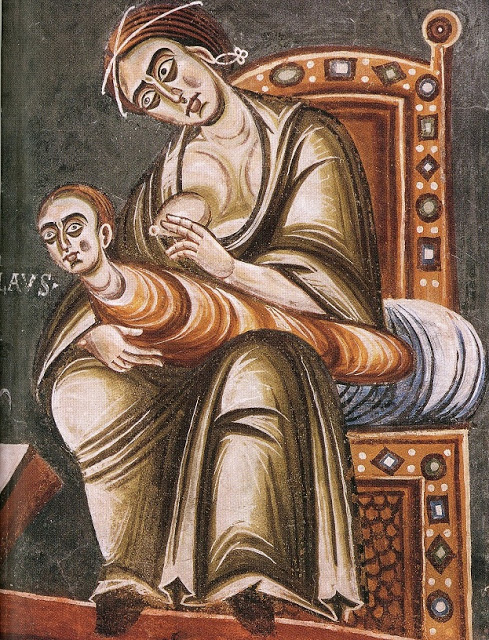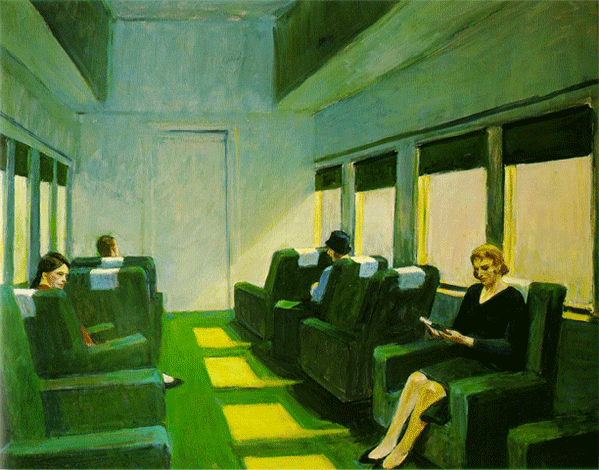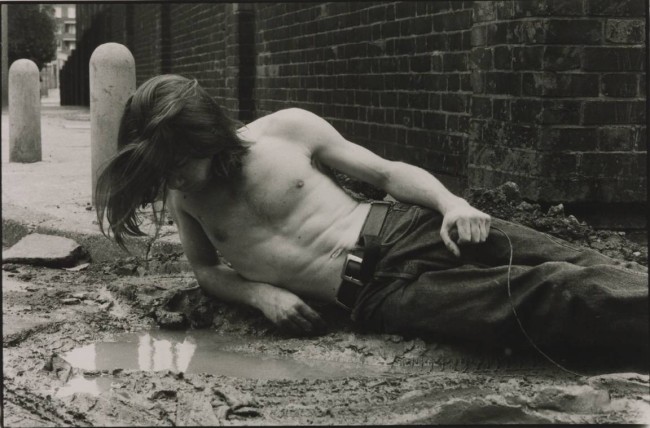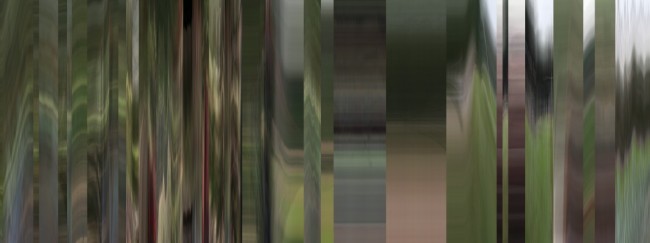
I Death…
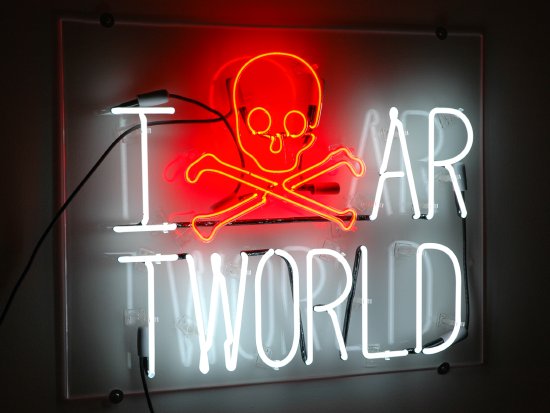
Patrick Grenier, I’d Eat Heart Worm, 2005 neon with transformer 24″ x 32″ [installation view]
Glitched furniture

A hand-carved glitch-style storage unit titled “Good Vibrations“. By architect and designer Ferruccio Laviani:
“Echoes of faraway places and Oriental elements are glimpsed in the “disorienting” design of this storage unit, which seems to have been “deformed” by a strong jolt or by swaying movements. Although it appears to depart from the aesthetics of the past, in fact it draws upon ancient knowledge in the use of carving and fine wood workmanship.”
[via dangerous minds]
St. Nicholas Refusing His Mother’s Milk
Animated Gif of the Day: Edward Hopper
Webcam Venus

Webcam Venus, by Addie Wagenknecht & Pablo Garcia:
“In Webcam Venus, we asked online sexcam performers to replicate iconic works of art. This piece is an experimental homage to both fine art and the lowbrow internet phenomenon of cams. Sexcams use webcams and chat interfaces to connect amateur adult performers with an audience. Users log on to see men, women, transsexuals, couples and groups broadcast their bodies and sexuality live for the public, often performing for money. To create this experiment in high and low brow media, we assumed anonymous handles and spent a few hours each day for a month asking performers: “Would you like to pose for me?””
An open letter to Apple
“an open letter to Apple + experimental prosumer manifesto on the issues of planned obsolescence, upgrade culture, technological self-reliance, control and copying. A [re]mix/make of Phil Morton’s 1976 video tape ‘General Motors’, in which contemporary Chicago [dirty] new media artists explain their love && hate relationship with the ‘default art computer’. by Nick Briz, copy<it>right 2013″
Post Artists

“I like to think of the artists who are creating in these spaces, myself included, as “Post Artists.” We publish our art in the form of posts, but we’re also creating work that could be considered “after” traditional interpretations of art. And while it’s become something of an art world cliché to be “post-” something, we are living in an age that is quick to label things “post-”. This title attempts to reclaim that word with some humor. The state of Post Art is open to roughly 34 percent of the world. And the content that is being created in the space ranges from popular culture GIFs to ’net art to porn, and everything in between.”
On Coffee Houses, Salons, and the Post Arts, by Man Bartlett on Hyperallergic.
Installation Art: Who Cares?
“The maintenance and conservation of contemporary visual art is a new challenge for museums and art conservators. More and more artists have taken leave of the painter’s brushes and are moving on to new media, such as video. Or they are making installations of transient materials like polystyrene, wax and scotch tape. Can these works be saved for the art lovers of the future?”
Get lost in a gif
Nothing like a little disaster
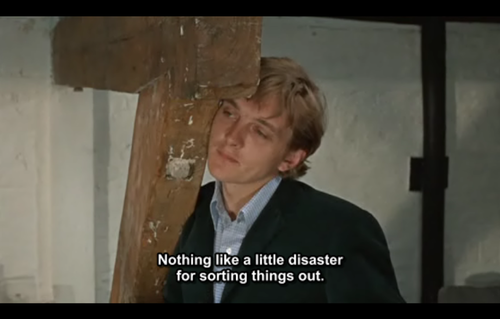
Blow Up, Michelangelo Antonioni, 1966
The DRM Chair
“The DRM Chair has only a limited number of use before it self-destructs. The number of use was set to 8, so everyone could sit down and enjoy a single time the chair.
A small sensor detects when someone sits and decrements a counter. Every time someone sits up, the chair knocks a number of time to signal how many uses are left. When reaching zero, the self-destruct system is turned on and the structural joints of the chair are melted.”
DIS Images: rethinking stock photography

DIS Images is a fully functioning stock image library. Dedicated to manipulating the codes and trends in stock photography, DIS Images invites artists to create alternative scenarios and new stereotypes, thus broadening the spectrum of lifestyle portrayal.
Animated Gif of the Day
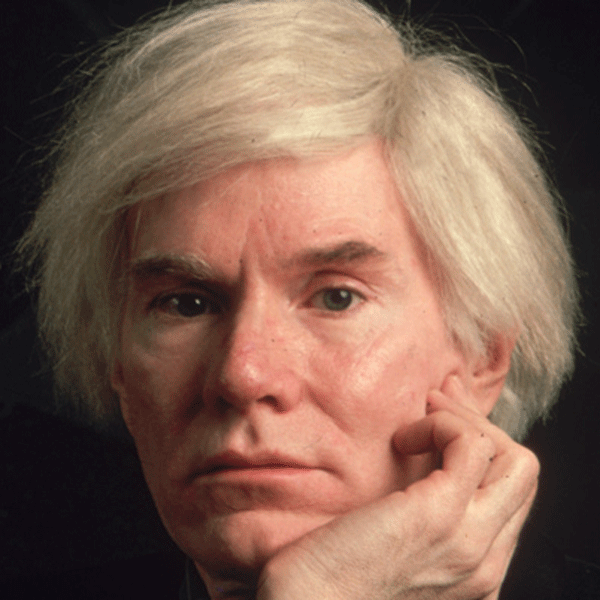
Ibon Mainar, “A. Warhol” (Animated Gif)
Urban Narcissus
Getting the Book Invented Properly
The audio of this animation was recorded in 1993 (!!!) by Douglas Adams. Basically, he predicted e-book readers…
Will 3D Printing Change the World?
Bucolic landfills
Amazing series of digitally manipulated images of landscapes by chinese artist Yao Lu:
“The artist photographs mounds of garbage covered in green protective nets which he assembles and reworks by computer to create bucolic images of mountain landscapes shrouded in the mist inspired by traditional Chinese paintings. Lying somewhere between painting and photography, between the past and the present, Yao Lu’s work speaks of the radical mutations affecting nature in China as it is subjected to rampant urbanization and the ecological threats that endanger the environment.”
[via colossal]
3D scanning and candy hacking
Hot Pop Factory 3D-scanned a bunch of people and gift them with personalized Pez candy dispensers. Sweet…
[via newaesthetic]
Moviebarcodes
MOVIEBARCODE compresses entire films and famous film sequences into barcode-like images where the lines represent frames from the movie.
[via boingboing]
Dream players
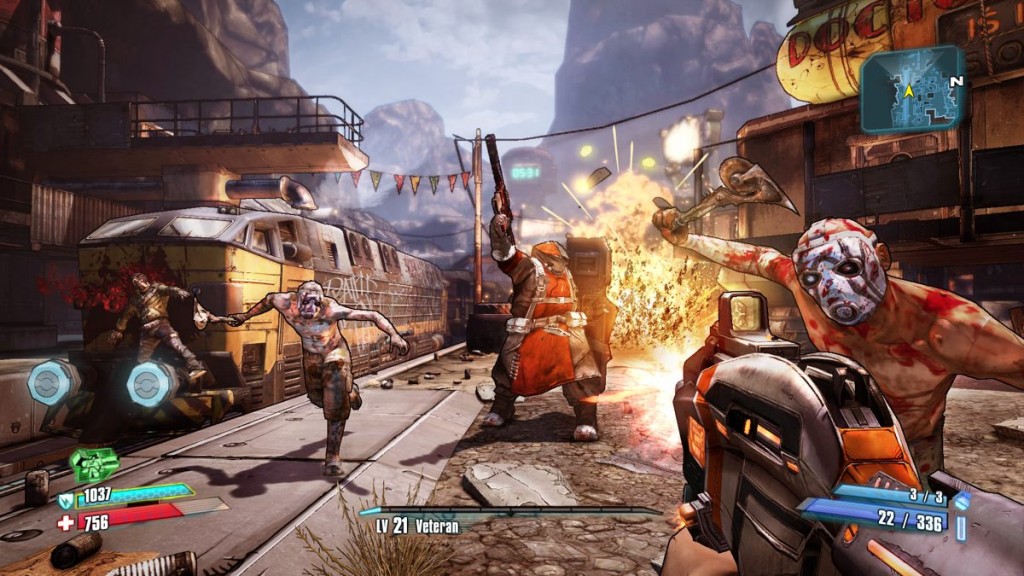
“Playing video games before bedtime may give people an unusual level of awareness and control in their dreams, LiveScience has learned.[…] Dreams and video games both represent alternate realities, according to Jayne Gackenbach, a psychologist at Grant MacEwan University in Canada. But she pointed out that dreams arise biologically from the human mind, while video games are technologically driven by computers and gaming consoles.
“If you’re spending hours a day in a virtual reality, if nothing else it’s practice,” said Jayne Gackenbach, a psychologist at Grant MacEwan University in Canada. “Gamers are used to controlling their game environments, so that can translate into dreams.”
Cup of fur…
The big picture

[found here]
Away from the center
“We can argue about whether the loss of a cultural center is a good thing or not, but it really doesn’t matter what one generation believes is good for the next… all of our choices are leading in just one direction, which is away from the center.”
Seth Godin, We Are All Weird
